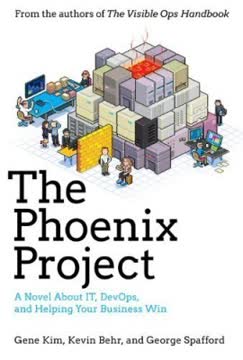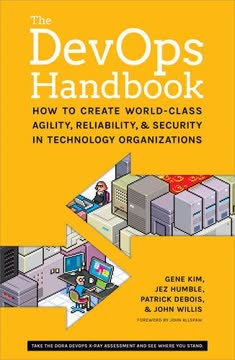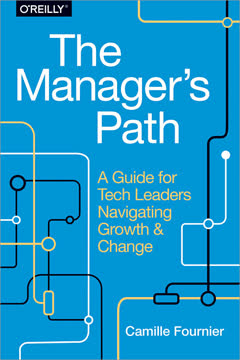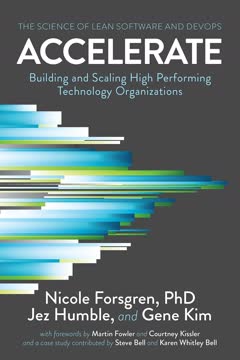重点摘要
1. 零信任网络:网络安全的范式转变
零信任模型将这一图示彻底颠覆。
安全的根本转变。 零信任网络代表了一种革命性的网络安全方法,摒弃了传统的基于边界的模型。零信任假设默认情况下不信任任何用户或设备,无论其位于企业网络内外。该模型要求:
- 对每个网络请求进行身份验证和授权
- 对所有传输中的数据进行加密
- 持续监控和验证安全状态
关键原则:
- 网络始终被假定为敌对的
- 外部和内部威胁始终存在
- 网络位置不足以决定信任
- 每个设备、用户和网络流量都需要身份验证和授权
- 策略必须是动态的,并从多个数据源计算得出
2. 边界模型已死:拥抱零信任架构
转换到基于信任评分的策略模型并非没有缺点。
网络安全的演变。 传统的边界模型依赖防火墙和VPN来创建“安全”的内部网络,但在当今复杂和分布式的IT环境中已不再足够。零信任架构通过以下方式解决了边界模型的局限性:
- 消除可信内部网络的概念
- 对所有资源实施强身份验证和授权
- 应用微分段以限制横向移动
- 使用加密保护传输和静态数据
零信任的好处:
- 提高对外部和内部威胁的安全态势
- 更好地可视化和控制网络流量
- 减少攻击面并在发生漏洞时限制爆炸半径
- 简化网络管理并减少对VPN的依赖
3. 身份和访问管理:零信任的基石
身份验证具有另一个有趣的特性。
身份至关重要。 在零信任模型中,强身份和访问管理(IAM)是基础。每个用户、设备和应用程序都必须具有可验证的身份,访问决策基于这些身份和相关属性做出。
零信任中IAM的关键组成部分:
- 所有用户的多因素身份验证(MFA)
- 基于用户角色和属性的细粒度访问控制
- 持续的身份验证和授权
- 身份联合和单点登录(SSO)功能
- 基于实时风险评估的动态策略执行
信任评分: 实施一个动态信任评分系统,考虑以下因素:
- 用户行为模式
- 设备健康和合规性
- 访问的地点和时间
- 请求资源的敏感性
4. 设备信任:在零信任网络中保护端点
在零信任网络中信任设备至关重要,但也是一个极其困难的问题。
端点安全至关重要。 在零信任网络中,设备是潜在的攻击入口,必须彻底保护并持续监控。设备信任的关键方面包括:
- 使用证书或硬件支持的凭证进行强设备身份验证
- 持续评估设备健康和合规性
- 自动补丁和更新
- 端点检测和响应(EDR)功能
- 设备隔离和远程擦除功能
实施设备信任:
- 建立健全的设备清单和管理系统
- 实施安全的设备入网流程
- 尽可能使用硬件安全模块(HSM)或可信平台模块(TPM)
- 定期轮换设备凭证和证书
- 监控设备行为以发现异常和潜在威胁
5. 应用安全:从代码到执行建立信任
信任设备只是故事的一半,还必须信任代码和编写代码的程序员。
保护整个管道。 在零信任环境中,应用安全不仅仅是保护运行中的应用程序,还包括整个软件开发生命周期和运行环境。关键考虑因素包括:
- 安全编码实践和开发人员培训
- 定期代码审查和静态分析
- 漏洞扫描和渗透测试
- 运行时应用自我保护(RASP)
- 持续监控和记录应用行为
应用信任措施:
- 使用代码签名确保已部署应用的完整性
- 实施应用级加密和访问控制
- 采用微分段限制应用间通信
- 利用容器安全和编排工具保护容器化应用
- 实施即时(JIT)和足够访问(JEA)原则以控制应用权限
6. 网络流量安全:加密、身份验证和授权
加密带来机密性,但有时也会带来不便。
保护所有通信。 在零信任网络中,所有流量必须加密、身份验证和授权,无论其来源或目的地。这种方法确保数据的机密性和完整性,同时防止未经授权的访问和横向移动。
网络流量安全的关键方面:
- 使用强加密协议(如TLS 1.3,IPsec)
- 所有网络连接的双向身份验证
- 网络分段和微分段
- 软件定义边界(SDP)或黑云架构
- 持续监控和分析网络流量模式
实施策略:
- 部署公钥基础设施(PKI)管理证书
- 实施协议感知代理以进行细粒度访问控制
- 使用网络加密网关保护遗留系统
- 采用网络检测和响应(NDR)工具进行威胁检测
- 实施DNS安全措施(DNSSEC,DoH,DoT)
7. 实施零信任:逐步和务实的方法
零信任提倡一个控制平面,将授权决策的结果注入网络以允许可信通信的发生。
分阶段实施。 过渡到零信任模型是一项重大任务,需要仔细规划和执行。逐步、分阶段的方法可以让组织在最小化对现有操作的干扰的同时实现收益。
实施零信任的步骤:
- 评估当前的安全态势并识别差距
- 定义零信任目标和优先级
- 从试点项目或特定用例开始
- 实施强身份和访问管理
- 增强设备安全和管理
- 保护应用和工作负载
- 实施网络分段和流量加密
- 部署监控和分析能力
- 持续优化和扩展零信任模型
关键考虑因素:
- 涉及整个组织的利益相关者
- 注重用户体验以确保采用
- 尽可能利用现有的安全投资
- 计划与云和混合环境的集成
- 制定衡量零信任实施效果的指标
8. 人的因素:零信任中的社会工程和物理安全
社会工程攻击,通过欺骗受信任的人在受信任的设备上采取行动,在零信任网络中仍然是一个关注点。
人类漏洞依然存在。 虽然零信任显著提高了技术安全性,但人类因素仍然是潜在的薄弱环节。社会工程攻击、内部威胁和物理安全风险必须与技术控制一起解决。
应对以人为中心的风险的策略:
- 为所有员工提供全面的安全意识培训
- 模拟钓鱼和社会工程演习
- 明确处理敏感信息的政策和程序
- 物理安全措施(如访问控制、监控)
- 背景调查和定期安全审查
- 内部威胁检测和预防计划
平衡安全性和可用性:
- 实施用户友好的安全工具和流程
- 提供清晰的安全措施解释
- 提供多种身份验证选项以满足不同用户需求
- 使用行为分析检测异常而不增加用户负担
- 定期收集反馈并调整政策以改善用户体验
以人为中心的安全措施对于补充零信任的技术方面至关重要,从而创建一个全面和有弹性的安全态势。
最后更新日期:
FAQ
What's Zero Trust Networks about?
- Security Paradigm Shift: Zero Trust Networks by Evan Gilman introduces a security model that assumes no trust in any network, internal or external, requiring verification for every access request.
- Framework for Secure Systems: The book provides a comprehensive framework for designing secure systems in untrusted environments, moving away from traditional security assumptions.
- Holistic Approach: It covers user, device, and application trust, offering strategies to manage these elements within a zero trust architecture.
Why should I read Zero Trust Networks?
- Modern Threats Addressed: The book is crucial for understanding and combating cybersecurity threats that exploit traditional perimeter defenses.
- Practical Guidance: It offers actionable design patterns and considerations for real-world systems, valuable for network engineers and security professionals.
- Expert Insights: Authors Evan Gilman and Doug Barth share their extensive experience with zero trust principles across various organizations.
What are the key takeaways of Zero Trust Networks?
- Assume Hostility: The network is always assumed to be hostile, shifting focus from perimeter security to rigorous verification of every access request.
- Dynamic Policies: Emphasizes the need for policies that adapt based on real-time data and context, rather than static rules.
- Trust Management: Introduces trust scores based on user and device behavior for nuanced access control decisions.
What is the zero trust model as defined in Zero Trust Networks?
- No Implicit Trust: Operates on the principle that no entity should be trusted by default; every access request must be authenticated and authorized.
- Continuous Verification: Requires ongoing verification of user identities and device integrity to ensure legitimate access.
- Dynamic Security Policies: Policies are dynamic, based on multiple data sources, allowing for fine-grained access control.
How does Zero Trust Networks define a zero trust network?
- Five Fundamental Assertions: The network is hostile, threats exist at all times, locality is not sufficient for trust, every access must be authenticated, and policies must be dynamic.
- Contrast with Traditional Models: Focuses on securing every interaction and minimizing trust assumptions, unlike traditional perimeter defenses.
- Holistic Security Approach: Integrates security into core operations rather than treating it as an add-on.
How does Zero Trust Networks address identity management?
- Centralized Identity Provider: Advocates for a centralized system to manage user authentication and authorization, ensuring consistent identity verification.
- Multifactor Authentication: Emphasizes the importance of MFA to strengthen identity security and reduce unauthorized access risks.
- Regular Audits and Updates: Suggests regular audits and updates to identity management practices to adapt to new threats.
What are the roles of the control plane and data plane in a zero trust network?
- Control Plane: Manages access requests, enforces policies, and maintains the network's security posture, dynamically configuring the data plane.
- Data Plane: Handles actual traffic and enforces control plane decisions, ensuring only authorized requests are processed.
- Separation of Responsibilities: Minimizes lateral movement risk, with the control plane continuously monitoring and adjusting access.
How does Zero Trust Networks suggest managing trust in users?
- Separate User and Device Trust: User trust should be managed independently from device trust due to different security implications.
- Identity Authority: Establishing a centralized identity authority is crucial for validating user identities and managing access rights.
- Adaptive Authentication: Advocates for methods that adjust based on trust scores and context, enhancing security without compromising user experience.
What are the best practices for implementing zero trust as outlined in Zero Trust Networks?
- Start with a Risk Assessment: Conduct a thorough assessment to identify critical assets and vulnerabilities, prioritizing focus areas.
- Implement Least Privilege Access: Ensures users have only necessary permissions, minimizing potential damage from compromised accounts.
- Continuous Monitoring and Response: Establish mechanisms to detect and respond to suspicious activities in real-time, maintaining network integrity.
How does Zero Trust Networks address the challenges of legacy systems?
- Authentication Proxies: Suggests using proxies to bridge legacy systems with zero trust principles, allowing secure access without infrastructure compromise.
- Incremental Adoption: Encourages gradual integration of zero trust principles with legacy systems, enhancing security measures over time.
- Secure Introduction Focus: Highlights the importance of secure introduction processes for legacy devices, ensuring authenticated and trusted connections.
What are the challenges of transitioning to a zero trust network mentioned in Zero Trust Networks?
- Cultural Resistance: Transition may face resistance from employees used to traditional security practices, requiring effective communication and training.
- Complexity of Implementation: Involves reconfiguring systems and processes, posing technical challenges that organizations must prepare for.
- Resource Allocation: Requires substantial resources, including time, personnel, and budget, necessitating careful planning to avoid operational disruption.
What are the potential attack vectors against a zero trust network as discussed in Zero Trust Networks?
- Identity Theft: Compromised user or device identities can bypass security measures, making identity protection crucial.
- Distributed Denial of Service (DDoS): Networks can still be vulnerable to DDoS attacks, requiring additional mitigation measures.
- Social Engineering: Exploits human vulnerabilities, necessitating training and awareness programs to recognize and respond to threats.
评论
《零信任网络》获得了大多数正面评价,平均评分为4.02/5。读者称赞其对零信任概念的全面概述,尽管有些人认为它过于理论化。该书因解释了零信任网络背后的哲学并将其与传统安全模型进行比较而受到赞誉。批评者指出缺乏实际实施细节,并建议其可能对大型组织最为相关。总体而言,尽管在适用性方面存在一些局限性,但它被认为是对新兴安全范式的宝贵介绍。
Similar Books














